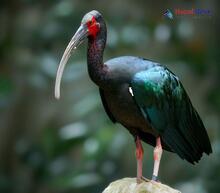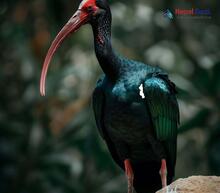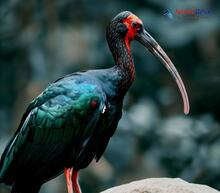The avian world is filled with fascinating species that have evolved over millennia, with a diverse array of characteristics that continue to captivate both ornithologists and nature enthusiasts alike. Among these intriguing birds is the Pseudibis genus, a group of large wading birds belonging to the Threskiornithidae family. Today, we delve into the captivating journey of the Pseudibis — exploring its origin, evolution history, taxonomy, morphology, ecology, and its unique presence in Nepal.
Unraveling the Origins and Evolution
Understanding the origin and evolution of the Pseudibis genus is crucial for appreciating its ecological niche. Through the analysis of fossil records and genetic data, scientists have discovered that this group of birds belongs to the Threskiornithidae family—comprising ibises and spoonbills. However, the precise evolutionary trajectory remains a subject of ongoing research due to limited information.
Decoding Taxonomy
Taxonomy is an essential branch of biology that classifies living organisms into hierarchical categories. The Pseudibis genus includes two extant species: the White-shouldered Ibis (Pseudibis davisoni) and the Red-naped Ibis (Pseudibis papillosa). While both species share a common ancestor within their family tree, taxonomists have yet to fully reveal other related subfamilies or possible extinct members.
Morphological Marvels
Examining morphological features offers vital insights into an organism's adaptations to specific environments. Both Pseudibis species possess long curved bills used for probing substrates while foraging in wetland habitats. Their large wings allow for sustained flight and excellent maneuverability—ideal characteristics for traversing their preferred ecosystems.
Ecological Endeavors
Occupying diverse ecosystems such as marshes, rice paddies, and riverbanks, the Pseudibis genus boasts impressive adaptability to various environments. They primarily feed on invertebrates like insects, worms, crustaceans, and small vertebrates such as amphibians. Although predominantly a solitary bird during non-breeding periods, Pseudibis species have been known to aggregate at roosting sites or feeding grounds.
Presence in Nepal: A Rare Glimpse
The Red-naped Ibis (Pseudibis papillosa) has a wide distribution range stretching across South Asia, with sporadic sightings in Nepal. With its striking appearance and elusive nature, spotting this magnificent creature within the country's borders is both rare and remarkable—strengthening its allure among birdwatchers.
In conclusion, the extraordinary evolutionary journey of the Pseudibis genus has culminated in two extant species that continue to pique the curiosity of scientists and nature enthusiasts. With further research into their biology and ecology, we'll gain vital knowledge for their conservation. As we strive to appreciate these marvels of nature—bearing witness to their presence in Nepal serves as a reminder of the biodiversity we must cherish and protect.




